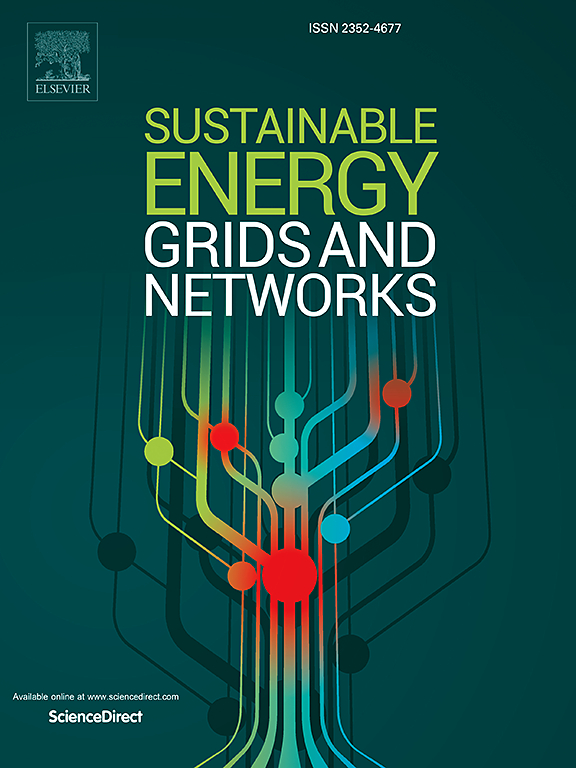优化区域综合能源系统中市场驱动的使用调节,以实现可持续能源效率和峰值负荷平衡
IF 5.6
2区 工程技术
Q2 ENERGY & FUELS
引用次数: 0
摘要
随着正在进行的改革重塑能源市场,能源系统的运行和优化越来越受到市场驱动动态的影响。本研究考察了区域综合能源系统内能量流动的复杂性,将消耗调节的概念扩展到包括电能、供暖和制冷需求。开发了一个综合框架,该框架结合了以市场为导向的调制策略,旨在平衡峰值和非峰值负载,最大限度地减少碳排放,并提高整体系统效率。这些策略旨在提高能源零售商和消费者的经济效益。提出的框架利用平衡公式增强方法来评估设备特性、每小时能量输出和操作策略。值得注意的创新包括动态定价机制,可调度和可转移负载的灵活调制,以及基于实时负载再分配的最优调度。这些方法有助于系统的稳定性、操作灵活性和可持续性。以某制造业园区为例进行的研究表明,17:00时的峰值电力需求为46.10 MW,峰谷比为12.20。供冷、供热需求峰值分别在15:00和12:00达到28.59 MW和23.34 MW。需求响应策略的实施有效地降低了这些峰值,在所有能源形式中展示了显著的负荷转移和改善的需求曲线平坦化。本文章由计算机程序翻译,如有差异,请以英文原文为准。
Optimizing market driven usage modulation in regional integrated energy systems for sustainable energy efficiency and peak load balancing
With ongoing reforms reshaping the energy market, the operation and optimization of energy systems are increasingly influenced by market-driven dynamics. This study examines the complexities of energy flows within regional integrated energy systems, extending the concept of consumption modulation to encompass the electrical energy, heating, and cooling demands. A comprehensive framework is developed that incorporates market-oriented modulation strategies aimed at balancing peak and off-peak loads, minimizing carbon emissions, and improving overall system efficiency. These strategies are designed to enhance economic outcomes for both energy retailers and consumers. The proposed framework utilizes a balanced formula augmentation method to evaluate equipment characteristics, hourly energy outputs, and operational policies. Notable innovations include dynamic pricing mechanisms, flexible modulation of dispatchable and transferable loads, and optimal scheduling based on real-time load redistribution. These approaches contribute to system stability, operational flexibility, and sustainability. A case study focused on a manufacturing park reveals peak electricity demand of 46.10 MW at 17:00, with a peak-to-valley ratio of 12.20. Cooling and heating demand peak at 28.59 MW and 23.34 MW at 15:00 and 12:00, respectively. Implementation of demand response strategies effectively reduces these peaks, demonstrating significant load shifting and improved demand curve flattening across all energy forms.
求助全文
通过发布文献求助,成功后即可免费获取论文全文。
去求助
来源期刊

Sustainable Energy Grids & Networks
Energy-Energy Engineering and Power Technology
CiteScore
7.90
自引率
13.00%
发文量
206
审稿时长
49 days
期刊介绍:
Sustainable Energy, Grids and Networks (SEGAN)is an international peer-reviewed publication for theoretical and applied research dealing with energy, information grids and power networks, including smart grids from super to micro grid scales. SEGAN welcomes papers describing fundamental advances in mathematical, statistical or computational methods with application to power and energy systems, as well as papers on applications, computation and modeling in the areas of electrical and energy systems with coupled information and communication technologies.
 求助内容:
求助内容: 应助结果提醒方式:
应助结果提醒方式:


